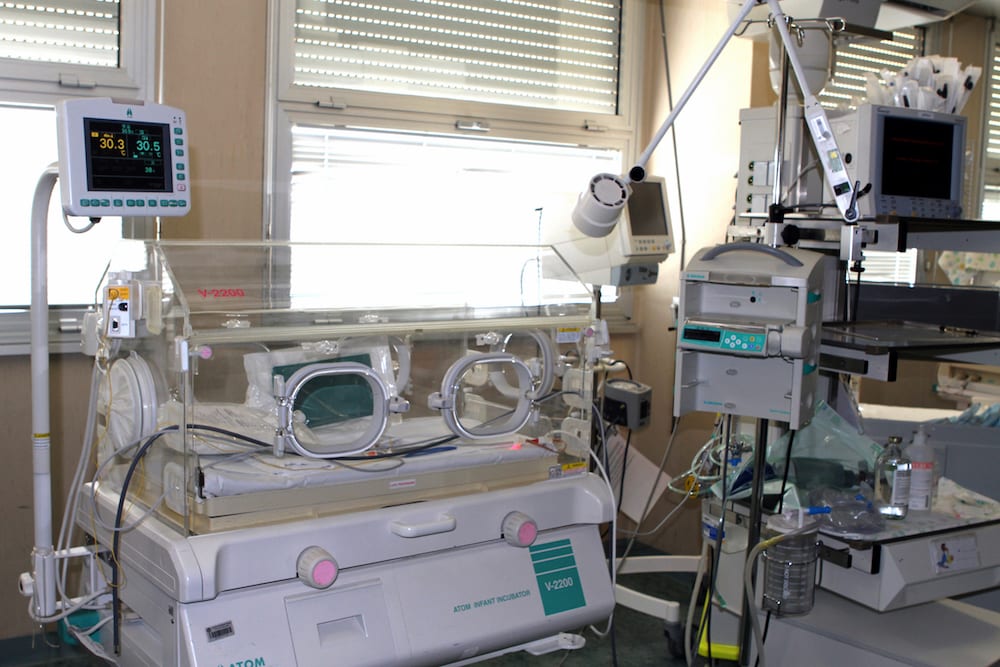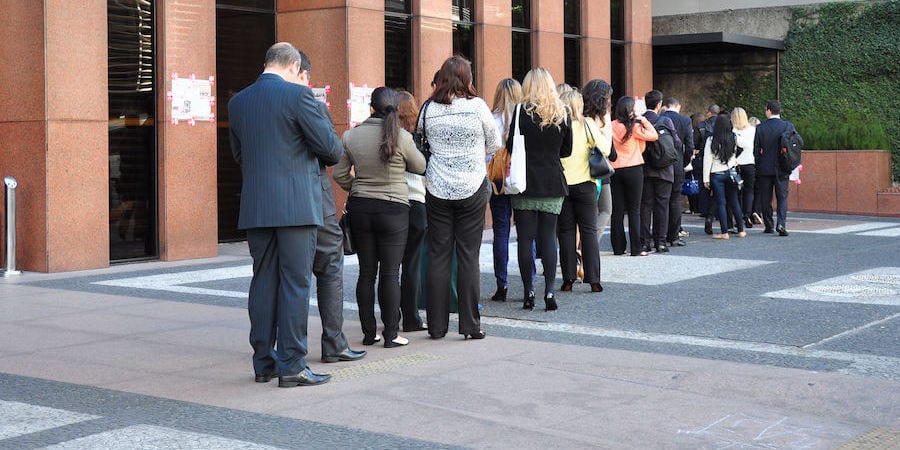
Changing the layout of a nursery to improve neonatal care
FEATURE – Another month, another story of a lean healthcare project from Siena's hospital. This time we take you to the Intensive Care Nursery, whose layout was transformed to provide better care to premature newborns.
Words: Intensive Care Nursery staff, Siena University Hospital (Nadia Federico, Valentina Micheli, Elisa Neri, Elena Pappadopulo, Barbara Tecce, Doctor Barbara Tomasini, and Giovanna Zani)
To complete their neuromotor development, premature newborn infants need high-tech equipment, well-trained carers, and a quiet and sterile place. Our medical staff, who constantly monitors the newborns' evolving condition, knows all too well how important a clean, safe environment and the support we can provide family members are to the little patients' overall wellbeing.
An impediment to all this, we knew, was the fact that our Intensive Care Nursery was cluttered and messy – with computers located just next to the incubators and people coming and going all around them, it was clear we had to find a way to improve the environment in which our baby patients are cared for (in our two large rooms, we can have up to eight newborns) and to give them and their families more privacy. The risk of infections alone had made this a pressing necessity.
So, we decided to move the computers away from the cribs, by placing a power socket into the room we wanted them in. We felt that would have been enough. However, the lean office told us it wasn't the case, encouraging us to accurately map the Nursery's process and environement instead. Needless to say, we were not too happy at first.
Between May and August 2016, 38 newborns had to be isolated after getting infections. We all agreed that it is unacceptable that our patients would have to endure this (and even the cost for the hospital was ballooning – with the budget for 16 of those 38 isolated infants overrun due to the high cost of the cure of newborns with infections).
The analysis of the situation showed that the overcrowding of the computer area and the traffic this generated in proximity of the cribs could be a major cause of infections. This confirmed our doubts by giving us hard data that we could now look at while trying to improve things. It soon became clear that we needed a bigger change than just the moving of a power socket: we had to reorganize our space and review the flow of family members and professionals across the rooms.
Following a number of ward-wide meetings we sat down with the hospital's team responsible for logistics, the Mobility Department. We knew they could help us with this big undertaking, and together we came up with a simple project that grew in scope over the course of the following months.
Once we launched the first 5S experiments, we found new and different criticalities in the ward: for example, it was difficult to find sanitary materials because they were scattered around the rooms and were not properly organized. Cleaning the areas of the ward was also quite the mission: the Intensive Care unit was filled with unused furniture, the kitchen doubled up as a lab but was still full of empty counters, and even the room for IV preparation was incredibly cluttered.
We needed to fully reorganize ourselves.

We started with the nurses' kitchen, the two medication storage rooms and a small, cramped space full of cupboards – in which we moved the PCs after finding an independent electrical box. This would have freed up space around the cribs, and represented a good start to our project.
In October 2016, we disassembled the kitchen and rebuilt it from scratch (we were lucky to have received a donation), using ergonomic and easy-to-clean materials and removing old furniture that, by now, was obsolete.
After the careful observation of the flow of staff members (and the development of a spaghetti diagram), we changed the layout of the two storage areas. Off-specs furniture was replaced with new cupboards that allowed us to better organize and recognize all the different drugs we keep, thus improving the levels of safety in the preparation of medication and reducing clinical risk. All the material we need in the ward is now catalogued and easy to find.
As mentioned above, we moved our PCs in what used to be an old and dusty archive that was impossible to clean and, frankly, quite hazardous due to the presence of very tall cupboards. This move had the added benefit of creating an area where doctors and nurses can now meet to discuss test results and medical reports without bothering the patients.
Before we applied lean thinking, people flowed aroud the ward in a chaotic way that could put the health of the premature newborns in danger. Now there is something of an invisible shield around them, and medical staff only interacts with the infants to provide them with the necessary care. Additionally, there are now two different flows for patient families and staff, which has made movement around the ward more linear.
We inaugurated our transformed ward on November 17 – which is World Prematurity Day – and it was incredible to see how different it immediately appeared. With rooms now used more efficiently, the ward felt bigger (we in fact saved a 5% of walkable floor area). People moving across it were visibly more relaxed and in general there was much more order in the way the equipment was organized. Rooms seem to have gotten back to the use they were originally intended for.
But our real goal was to improve the welfare of our patients: indeed, the number of cases of infection recorded since the changes were implemented has gone down to 14 – an average monthly reduction of 4.3 newborns. We are happy for the contribution that the better organization of space and work has given to our ability to guaranteee hygiene in the Nursery and reduce the risk of infection of our infants.
Before too long, the positive effects of our lean changes started to be clear to everyone, from patients' families to professionals working in the ward. And to think that all of this started with the lean office's "No" to our idea to jump the gun and go for the easy "solution"! That refusal challenged us to do better and to work as a team until we started to achieve the first results for our patients. In our mind, all this lies at the heart of lean thinking.
THE AUTHORS

The Siena University Hospital team who wrote this article:
Nadia Federico, nurse
Valentina Micheli, nurse
Elisa Neri, coordinating nurse
Elena Pappadopulo, nurse
Barbara Tecce, nursery assistant
Doctor Barbara Tomasini, Director of Intensive Care Nursery
Giovanna Zani, architecture student
Read more


WOMACK’S YOKOTEN – What does a lean employer look like? In this month’s column, the author reflects on the long-term commitment to employees a company engaged in lean thinking should make.


FEATURE – CEOs need to see people as assets and transform their companies’ product development systems if they are to tap into the full potential of a lean strategy.


FEATURE - Effectively dealing with a problem means learning to solve it in a variety of scenarios, not perfecting a point solution. For too long in lean we have only focused on gaining reusable knowledge... but what about reusable learning?


PROFILE – This month we meet another member of the lean community, a true pioneer of lean thinking, who contributed to introducing the methodology in Australian cities and healthcare organizations.

